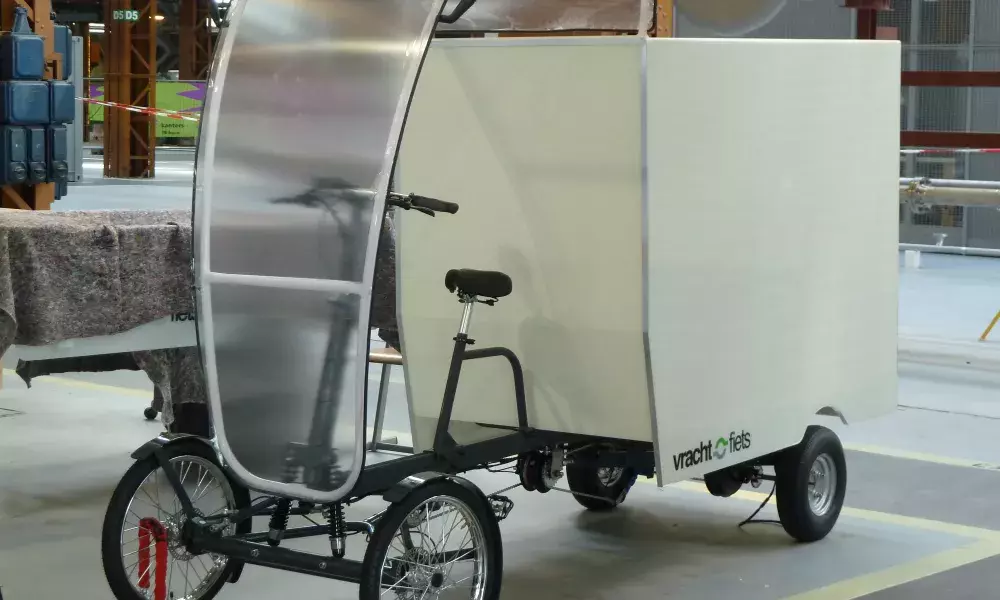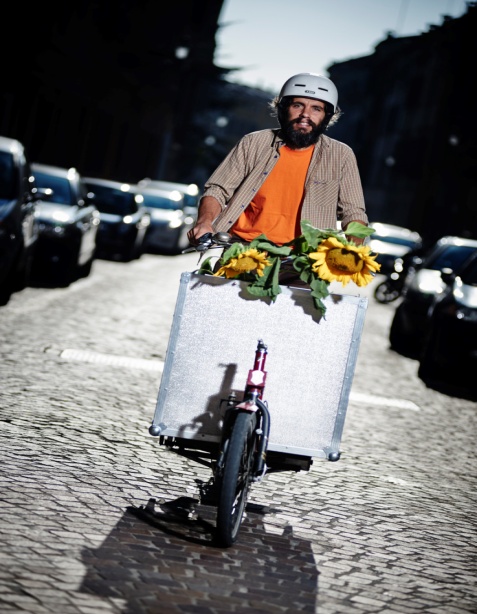Cairgo Bike extending innovative action in Brussels Capital Region

Innovative modal shift to reverse negative air quality trend
How then can the Cairgo Bike project be qualified as an innovative action? Cargo bikes in some shape or form have been with us for more than a century, though new technology means they are infinitely more comfortable and easier to operate.
Today it isn't only for people with a driving passion like Andrea Saccon who combined his love of cycling with a pioneering entrepreneurial spirit to set up an, initially, one-man cargo bike logistics business (La Sajetta) in Parma. Andrea's enthusiasm is infectious but he explains that, in the beginning, he was very much a niche player with a business model completely tailored to suit his lifestyle and capacity.

Olympic fitness is also no longer essential. While a good physique may still make life easier, e-technology has also entered the equation albeit at a price. So despite almost disappearance in many EU countries in the 1950’s, now simply using a cargo bike is not particularly innovative. Furthermore with “Copenhagenise” as inspiration, many cities, businesses and individuals have experimented and reconnected with this “new cool” and efficient form of transport. Despite this dynamic of readoption, the Cairgo Bike project still represents an innovative ambition and approach, in its mission to mainstream cargo bike use as a clean and operationally effective transport option for cities.
Exploiting and building on an active travel trend
The objective of Cairgo Bike is not limited to simply promoting cargo bike use in the urban context. Firstly the project is firmly conceived as a tool to help reverse the current condition of inferior air quality in Brussels, to accelerate and support any emerging recovery trends. It is an initiative based on policy maker recognition of the toxic threat to the population posed by emissions from cars and LGVs, and a desire to reverse this situation through concrete intervention.
This makes Cairgo Bike a driving force, a primary impulse to instigate a fundamental and structural modal shift, away from fossil fuelled vehicles to active travel modes. Cairgo Bike will not in itself realise the degree of modal shift required but will be instrumental
Secondly it is about embedding a cargo bike ecosystem within a planned and agreed sustainable mobility strategy for the Capital Region and its 19 municipalities. The project will help communicate the conviction of policy makers, concerning the seriousness of the air quality problem, to the wider public. Visibility will be a key to convincing and converting members of the public and families to rethink the school run, the shopping trip, the picnic in the park, the sport club journey. It also targets businesses (SMEs but not exclusively) and contractors to review and transform how they provide services in terms of delivery activity, cleaning, repair and maintenance, small passenger transport etc. Criticism that low emission measures penalise lower income groups and business initiatives are not completely unfounded. Cargo bikes and especially e-cargo bikes are not inexpensive - in a new hype climate - for real family, small business or start-up budgets. However the offer presented in the Cairgo Bike project, to provide grant assistance for purchase, to explore group purchase possibilities, share and loan models etc. can provide an alternative and ultimately affordable transport solution. Such measures focus on easing the step-in process, mobilising transition phase take-up, leading to a final full acceptance transformation.
A toolkit of integrated actions
The project is developed as an integrated package of actions (try out and train; rent, share and purchase support; secure parking provision) designed to raise awareness and via a more carrot than stick approach, nudge and encourage radical behaviour change.
Translating these mutually supporting, interacting and overlapping steps/actions into project work packages, is based on the concept of activating quadruple-helix type partnership. Public (authorities) bodies, cycling support organisations and businesses, private enterprise and university researchers are combining to deliver a composite battery of actions. These measures simultaneously target and seek to engage involvement of a wider stakeholder group of relevant institutions, organisations and citizens. The project has already organised two stakeholder meetings (which have attracted participation of more than 100 individuals and organisations) to explain the initiative and generate participation in delivery of the specific actions. In this way it is previewed that stakeholder sub-groups can provide a direct hands-on input to reinforce implementation of actions.
The project alone cannot resolve all the measures required to deliver a fully sustainable mobility system for the Belgian capital, for instance it will not deal with the redesign or provision of cycle lane infrastructure. In this optic it is firmly based within the framework of the Regional Sustainable Urban Mobility Plan “Good Move”, and forms part of a coordinated set of policy orientations and concrete interventions generating both spatial and behavioural change. In such a wider perspective, goals achieved by Cairgo Bike can evidently reduce noise pollution, which is also an area of concern for public health strategists.
Measuring emission exposure
Realising that growth in cycle share, in a mobility pattern still dominated by vehicle transport, actually puts cyclists at some level of risk, the project has built in a system of real time monitoring to try and assess the degree of threat and propose possible alternatives (risk mitigation, safer route possibilities, traffic modifications). A sample of cargo bike converts/users will be fitted with aethalometers to establish a record of route choice and inhalation of black carbon as a targeted form of crowd science exercise. This will primarily be a joint venture bringing together the MOBI faculty of the Vrije Universiteit Brussel and the Brussels Environment administration and will also feed in to the monitoring and evaluation of general project performance.

Through all the project actions the intention is to learn from lessons already learned in other cities, but also to ensure that Cairgo Bike lessons nourish local policy making (i.e. Good Move) but are also available to a wider platform of EU cities developing cargo bike strategies. Brussels has already made contact with the Polish city of Gdynia to explore and share experiences in terms of behaviour change campaigns and introduction/action implementation.
Next steps
Coming articles will focus in more detail on the action areas and partner activity to implement the individual components, the building blocks of a concerted and composite intervention. So watch this space and join the Cairgo Bike momentum.
About this resource
The Urban Innovative Actions (UIA) is a European Union initiative that provided funding to urban areas across Europe to test new and unproven solutions to urban challenges. The initiative had a total ERDF budget of €372 million for 2014-2020.
Similar content




